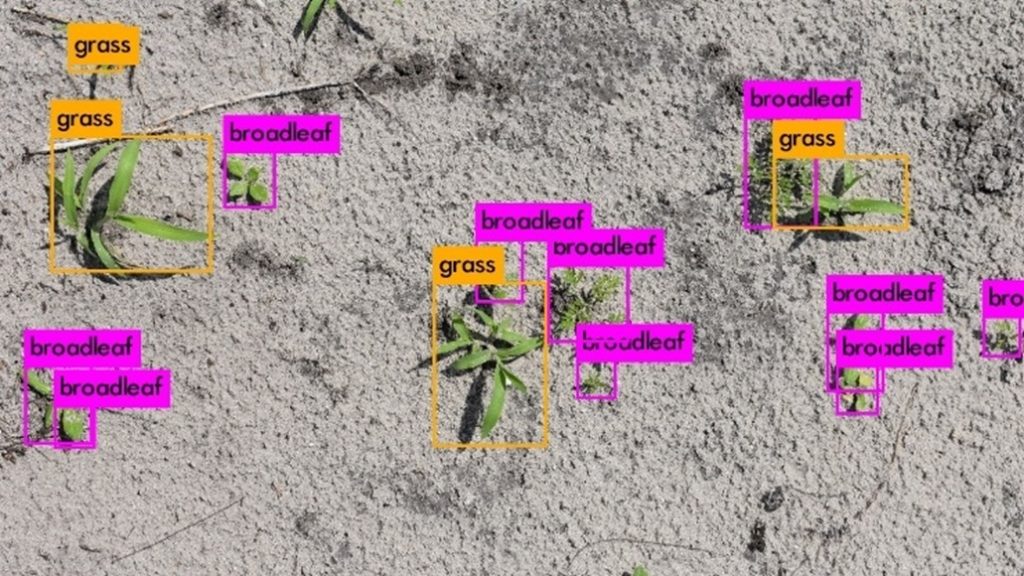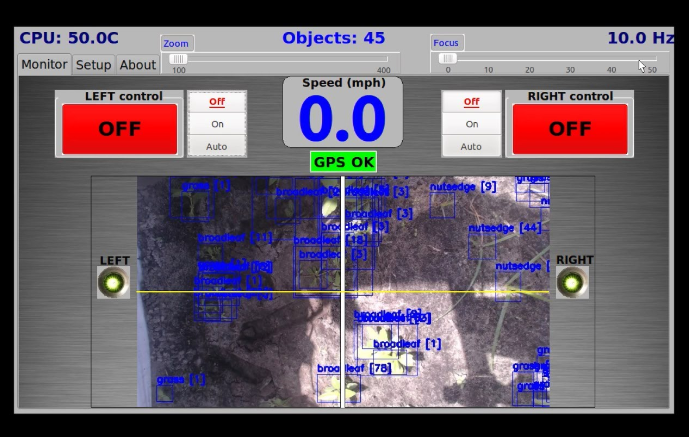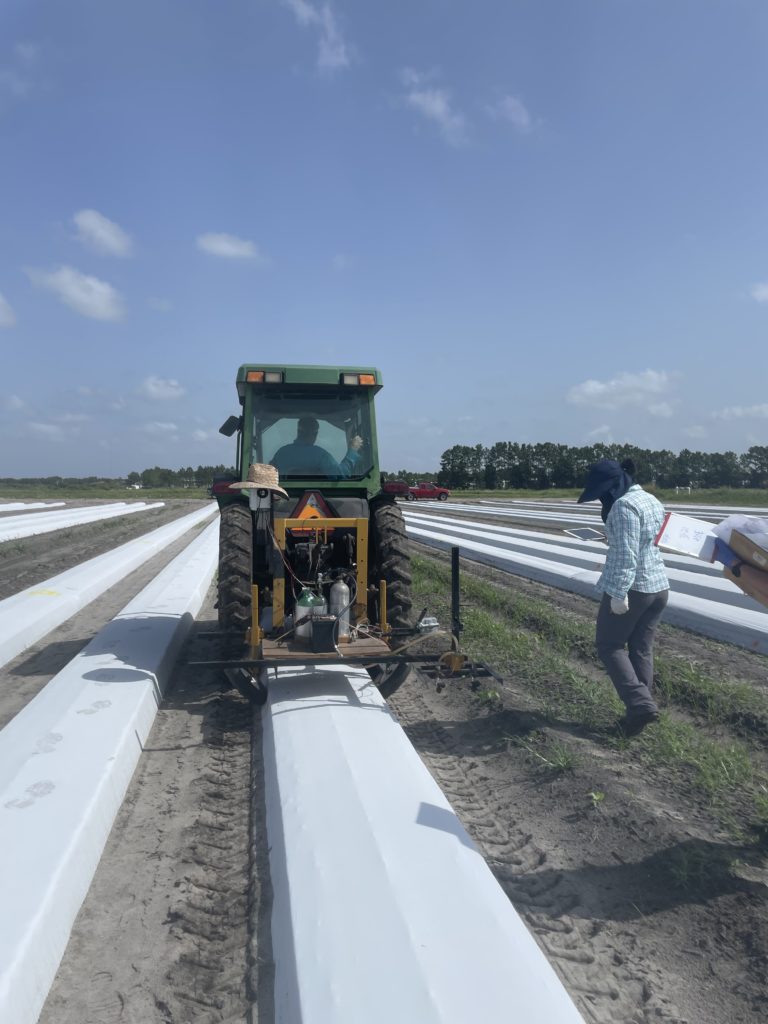
Photo by Shaun Sharpe
By Nathan Boyd and Arnold Schumann

Would you be willing to reduce herbicide inputs if it did not negatively impact your bottom line, required no additional labor, and weeds were still adequately controlled? For most growers, the answer would automatically be yes if it was possible.
How the Technology Works
University of Florida Institute of Food and Agricultural Sciences (UF/IFAS) researchers set out to achieve this exact goal several years ago. The first step in the process was to collect thousands of weed images and label them correctly to be used in the training process. The second step was to train various artificial neural networks, a type of artificial intelligence (AI), to detect weeds, weed categories or weed species.
In simple terms, artificial neural networks are computer programs that can be trained to detect and identify objects of interest. In this case, the UF/IFAS research team trained the artificial neural networks to differentiate weed species as well as weed categories such as broadleaf, nutsedge or grass (Figure 1). The neural networks can accurately detect the weeds and identify the categories of interest. For row middle (the space between raised, plastic covered beds) trials, the broadleaf, grass and nutsedge categorization was used because different herbicides are used for the different categories.

The next step in the process was to integrate the trained neural networks with smart spray technology. A user-friendly controller (Figure 2) was designed for this purpose. The controller was integrated with a prototype sprayer (Figure 3). A camera on the spray technology sends video feed to the computer, where the trained neural network detects and identifies the target weed. When a weed is identified, the computer sends a signal to solenoids to open and allow herbicides to be applied where the weed was detected. This spray unit is referred to as smart spray technology.
Promising Results
The final step was field evaluations of the technology. A variety of field trials have been conducted at the UF/IFAS Gulf Coast Research and Education Center.
With the current technology, the average percent of broadleaf, nutsedge and grass weeds correctly targeted in row middles when the tractor is traveling at 2 miles per hour is 79%, 74% and 89%, respectively. Reductions in spray volume vary with weed density, but average around 41% compared with banded applications. Additional modifications are needed to improve targeting and increase tractor speed, but early results are very promising.
Row middle weed management typically includes the use of pre-emergent and post-emergent herbicides. In Florida, weeds typically cannot be adequately managed with only post-emergent applications. In fact, without the pre-emergent herbicides, the weed density is too high to warrant the use of smart spray technology. The most efficient approach tends to be banded applications of pre-emergent herbicides followed by spot applications of post-emergent herbicides. We are confident that precision herbicide applications will ultimately be broadly adopted within specialty crops and will lead to significant reductions in herbicide use.
This research has focused on precision herbicide applications, but weeds can be eradicated with many different technologies, including heat, clipping, pulling, lasers, etc. Research facilities across the country are working on this technology. The integration of artificial neural networks with different weed removal approaches makes this technology an option for many different farm types, including organic agriculture. Furthermore, this technology can be integrated with autonomous vehicles, making weed removal far less reliant on labor and more efficient. The use of AI in agriculture is still in the early stages and is likely to transform how we grow food.
Nathan Boyd is associate center director and professorat the UF/IFAS Gulf Coast Research and Education Center in Wimauma. Arnold Schumann is a professor at the UF/IFAS Citrus Research and Education Center in Lake Alfred.









